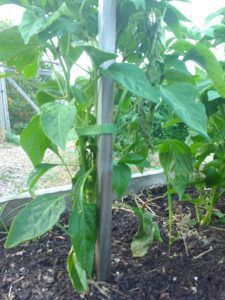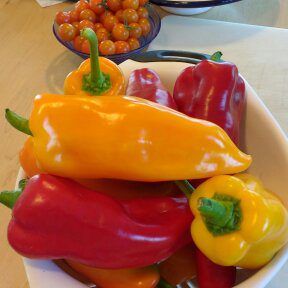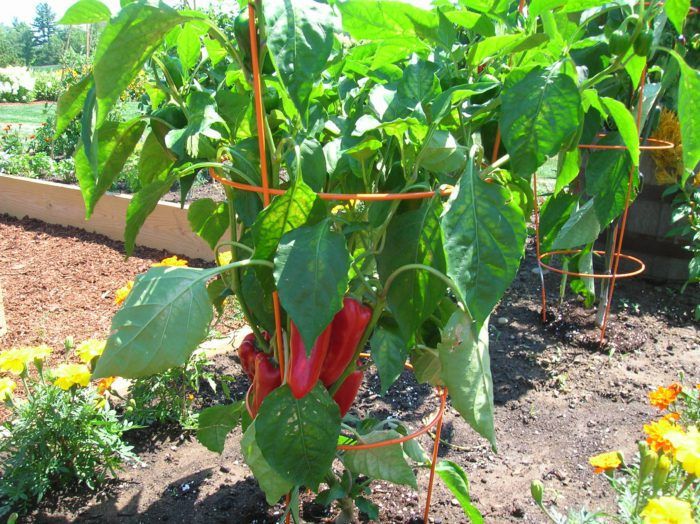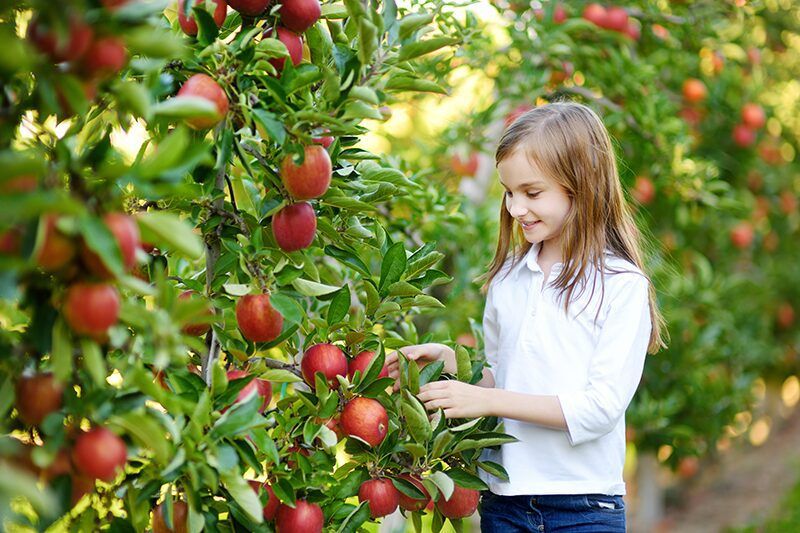One of the treats of growing up an Italian-American was eating my mother’s homemade sauteed hot sausage and fried peppers, with Italian bread. The sausage was hot, the Italian bull’s horn peppers were sweet and it everything was dripping with basil infused olive oil. Yum!
I’m a vegetarian now, but I still enjoy those sweet Italian peppers without the sausage. Over the years I’ve learned some tricks to growing them for the most production and to get the fruits to mature to red or yellow fast. Of course, the colorful peppers are always taste better than green ones. Here’s what I do to insure I have sweet peppers all summer.
are always taste better than green ones. Here’s what I do to insure I have sweet peppers all summer.
Varieties– I start by growing the Italian bull’s horn, banana-shaped, sweet pepper varieties. These varieties include ‘Corno Di Toro’, ‘Carmen’ and ‘Escamillo’. I find these varieties produce more fruit per plant and quickly turn to the mature color.
Growing– I don’t rush my peppers into the garden because they don’t like cool temperatures and damp weather. Wait until the weather and soil has warmed, then space plants a few feet apart. These plants get big. I add compost at planting and side dress with organic granular fertilizer every 3 weeks during the growing season.
Support– Newer hybrid varieties, such as ‘Carmen’, produce a ton of fruits that can weigh the plant down and topple it over. You can support the plants with small tomato cages or stakes and VELCRO® Brand Garden Ties wrapped around the main stem and stake. Keep harvesting and the plant will keep producing until frost. I can get 8 to 10 mature fruit per plant in one season.
Harvest– Be patient. Peppers need another 1 to 2 weeks after they’ve reached the mature green stage to turn their final color. It’s worth the wait because peppers are more nutritious and sweeter when ripe. Once they start turning red or yellow, they will continue in a warm room after harvest. Eat them fresh or freeze whole peppers for stuffing in winter.



